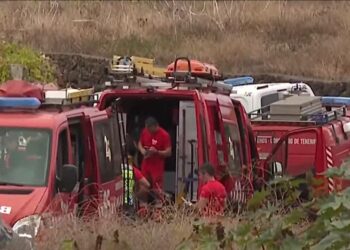Eight years after the damage inflicted by the Reticulitermes Flavipes underground termite (in June 2017), a response protocol was initiated for its eradication. Recently, two new foci have re-emerged in Tenerife, specifically in the municipalities of The Lagoon and Tacoronte.
As reported by this newspaper yesterday, in the first instance, it was detected along the edges of former sites, in the vicinity of Tagoro road, Valle de Guerra. However, the City Council cannot yet verify this. Conversely, in the second case, Arsenio Gómez, a technician from the Agriculture and Environment department of the Tacoronte Council, confirms that a focus has manifested in several residences near Guayonge College.
Tacoronte, particularly its coastal region, has been the municipality most affected, where the infestation has spread extensively, followed by several areas of The Lagoon.
“We are at a stage where we should not create panic but instead draw attention to the termite issue, both for citizens and administrations,” Gómez cautions. He acknowledges that, to date, residents have been proactive, yet new outbreaks are surfacing due to inadequate monitoring of symptoms, such as mud channels that may appear in homes or outside. It has been established that these termites not only consume wood but also fruits and vegetables.
Addressing this infestation also requires active participation from the public, such as contacting the designated phone lines provided by each municipality when a potential focus is suspected or when disposing of pruning debris, furniture, or wood. It is crucial not to leave these materials in public spaces, as there is a dedicated service for their collection, which helps prevent the further spread of the infestation.
Additionally, it is vital for institutions to continue their responsibilities, the technician emphasises. This specifically pertains to securing budgets for ongoing treatments, which “cannot be contingent upon budgetary changes.”
In November of last year, the Ecological Transition Ministry of the Canary Islands Government earmarked one million euros for the control and eradication of this invasive species, but there is yet to be any official confirmation regarding its inclusion in the 2025 budget.
Securing this funding is essential to ensure that the efforts of previous years are not disrupted, allowing for the establishment and coordination of policies, plans, programmes, and actions aimed at managing and eliminating a pest that poses significant economic and environmental threats.
It was in 2019 that the Cabildo de Tenerife and the Canary Islands government initiated the most extensive treatment ever undertaken globally against Reticulitermes Flavipes, managed by the public company Tragsatec.
This process involves placing wooden stakes equipped with GPS to identify the presence of these insects, and in areas where their existence has been confirmed, baits weighing about 150 grams containing cellulose are set up, attracting the termites. Biocidal substances, specifically hexaflumoron, are also used for their eradication. This initiative has led to the establishment of nearly 30,000 control points comprising detectors and biocide stations.
The efforts do not conclude here. Expert committees, technical working groups, an international congress, research by the Institute of Natural Products and Agrobiology (IPNA-CSIC), and a pilot project involving dogs are all components of the strategy to manage and eradicate Reticulitermes Flavipes, which remains ongoing, as a minimum of five years is required to confirm their complete extermination.
















